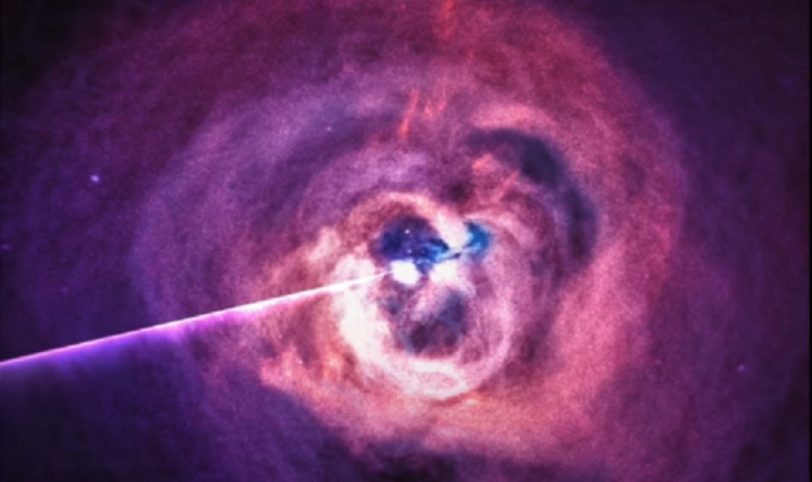NASA has released a haunting audio clip of sound waves rippling out of a 250 million light-years-away supermassive black hole.
The black hole is at the heart of the Perseus galaxy cluster, and the acoustic waves it emits have been transposed up 57 and 58 octaves to be audible to humans.
The result (below), released by NASA in May, is an unearthly (obviously) howling that, to be honest, sounds not only spooky, but also angry.
It is the first time that these sound waves have been extracted and made audible.
So, what exactly is going on in this recording? We can’t hear sound in space, but that doesn’t mean it doesn’t exist.
Astronomers discovered something truly amazing
in 2003: acoustic waves propagating through the massive amounts of gas surrounding the supermassive black hole at the center of the Perseus galaxy cluster, which is now famous for its eerie wails.
We couldn’t hear them at their current volume. The waves contain the lowest note ever detected by humans in the Universe – well below the limits of human hearing.
However, this recent sonification has not only raised the recording by several octaves, but it has also added to the notes detected from the black hole, giving us a sense of what they would sound like ringing through intergalactic space.
The lowest note, discovered in 2003, is a B-flat, just over 57 octaves below middle C; its frequency at that pitch is 10 million years. Humans can detect the lowest note at a frequency of one-twentieth of a second.
The sound waves
were extracted radially, or outwards from the supermassive black hole at the center of the Perseus cluster, and played in an anti-clockwise direction from the center, allowing us to hear sounds from the supermassive black hole in all directions at pitches 144 quadrillion and 288 quadrillion times higher than their original frequency.
The result is eerie, as are many of the waves recorded from space and transposed into audio frequencies.
The sounds aren’t just a scientific curiosity, though. The tenuous gas and plasma that drifts between the galaxies in galaxy clusters – known as the intracluster medium – is denser and much, much hotter than the intergalactic medium outside galaxy clusters.
Sound waves propagating through the intracluster medium are one mechanism for heating the medium as they transport energy through the plasma.
Because temperatures affect star formation, sound waves may play an important role in the long-term evolution of galaxy clusters.
That heat is also what allows us to detect sound waves. The intracluster medium glows brightly in X-rays due to its high temperature. The Chandra X-ray Observatory enabled not only the detection of sound waves, but also the sonification project.
READ MORE: Hear How You Would Sound on Mars!


